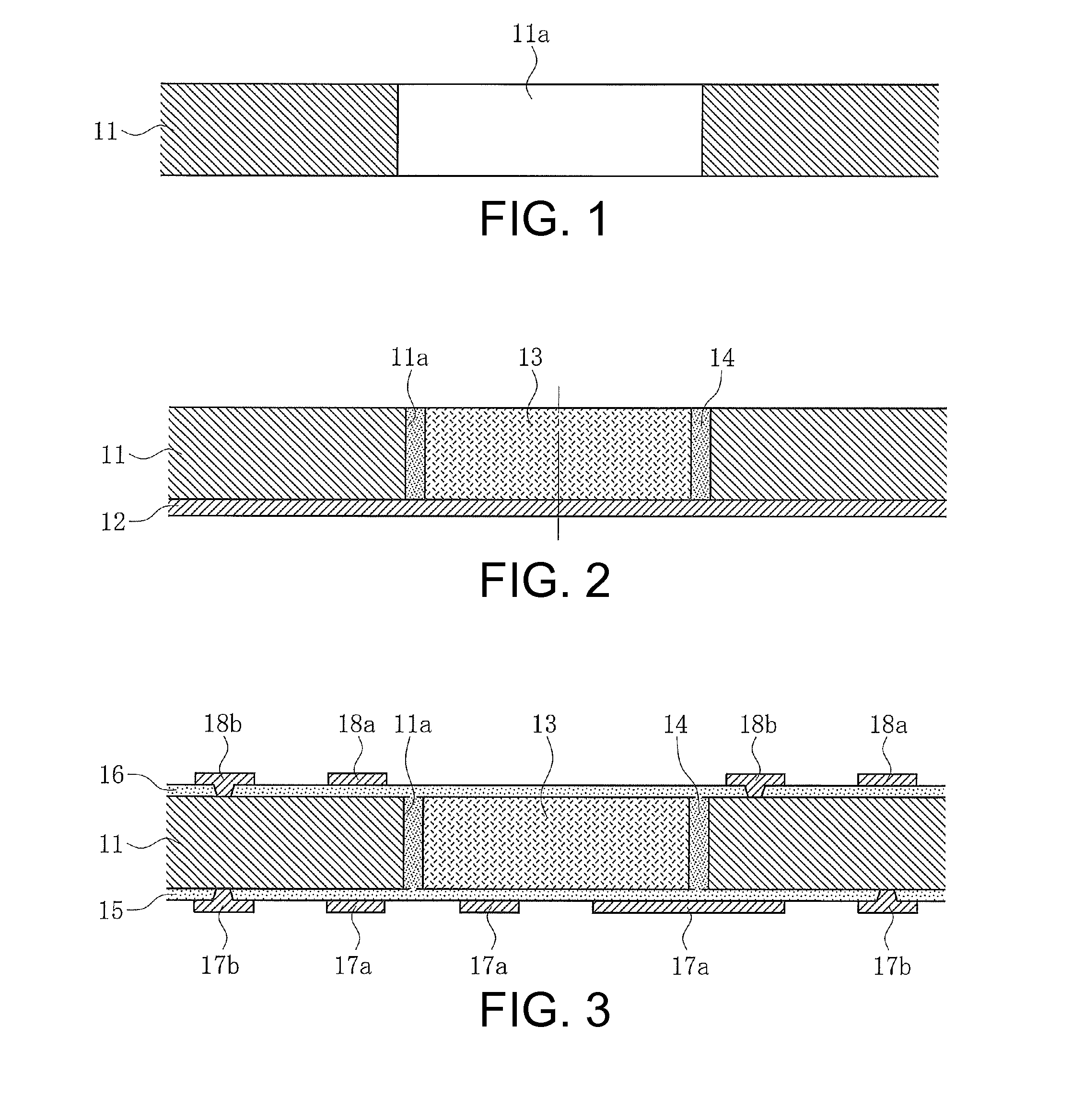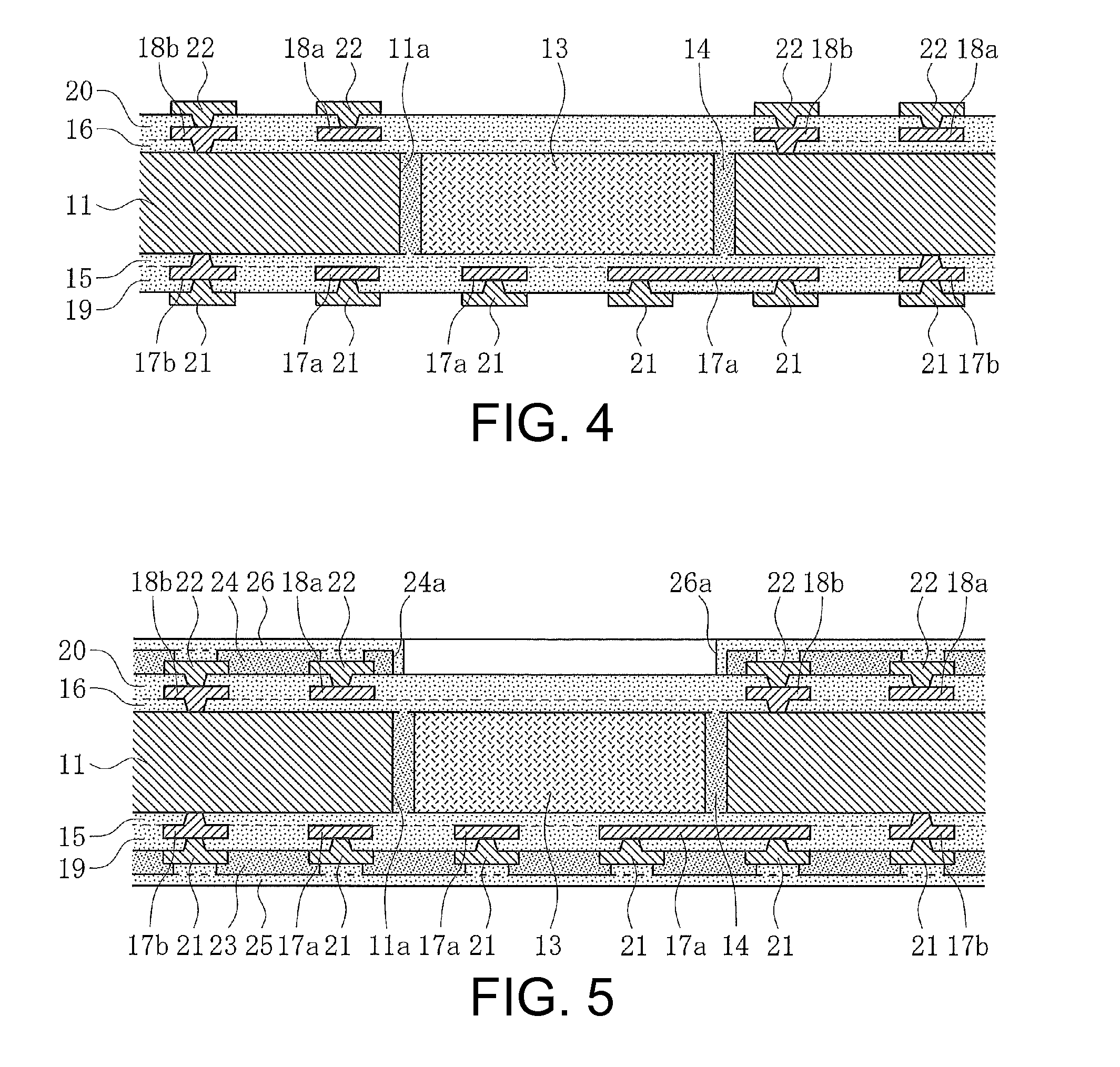Method of manufacturing substrate having cavity
a manufacturing method and substrate technology, applied in the direction of printed element electric connection formation, association of printed circuit non-printed electric components, coatings, etc., can solve the problems of tendency for variation, cracking in the bottom surface, and difficulty in creating a cavity with smooth so as to maintain the smoothness of inner walls and bottom surfaces
- Summary
- Abstract
- Description
- Claims
- Application Information
AI Technical Summary
Benefits of technology
Problems solved by technology
Method used
Image
Examples
modification examples
of Second Manufacturing Method
[0089]Below, modification examples of the second manufacturing method described above will be described.
modification example 1
[0090]In the second manufacturing method, a step was used in which the adhesive sheet 33 is bonded on the bottom surfaces of the signal wiring lines 32a and the cylindrical via 32b (refer to FIG. 17), but as shown in FIG. 23, instead of using the adhesive sheet 33, a sheet-shaped material made of a material for the insulating layer 37 that has not yet been cured may be bonded to the bottom surfaces of the signal wiring lines 32a and the cylindrical via 32b, with the bottom surface of the dummy part 34 inserted into the penetrating hole 31a being bonded to the sheet-shaped material and the sheet-shaped material then being cured by heat treatment. In this manner, it is possible to omit the aforementioned step.
modification example 2
[0091]In the second manufacturing method, a step was used in which the sheet-shaped material made of the material for the insulating layer 35 and the insulating portion 36 that has not yet been cured is bonded to the top surface of the base layer 31, and then the sheet-shaped material is pressed towards the base layer 31 such that a portion thereof fills the ring-shaped gap between the inner wall of the penetrating hole 31a and the outer wall of the dummy part 34 and into the inner hole of the cylindrical via 32b with remaining portions being left remaining in a layer shape on the bottom surface and the top surface of the base layer 31 (refer to FIG. 17). However, as shown in FIG. 24, a step may be taken in which a sheet-shaped material made of the material for the insulating layer 37 that has not yet been cured is bonded onto the bottom surfaces of the signal wiring lines 32a and the cylindrical via 32b and the bottom surface of the dummy part 34 inserted into the penetrating hole ...
PUM
 Login to View More
Login to View More Abstract
Description
Claims
Application Information
 Login to View More
Login to View More - R&D
- Intellectual Property
- Life Sciences
- Materials
- Tech Scout
- Unparalleled Data Quality
- Higher Quality Content
- 60% Fewer Hallucinations
Browse by: Latest US Patents, China's latest patents, Technical Efficacy Thesaurus, Application Domain, Technology Topic, Popular Technical Reports.
© 2025 PatSnap. All rights reserved.Legal|Privacy policy|Modern Slavery Act Transparency Statement|Sitemap|About US| Contact US: help@patsnap.com



